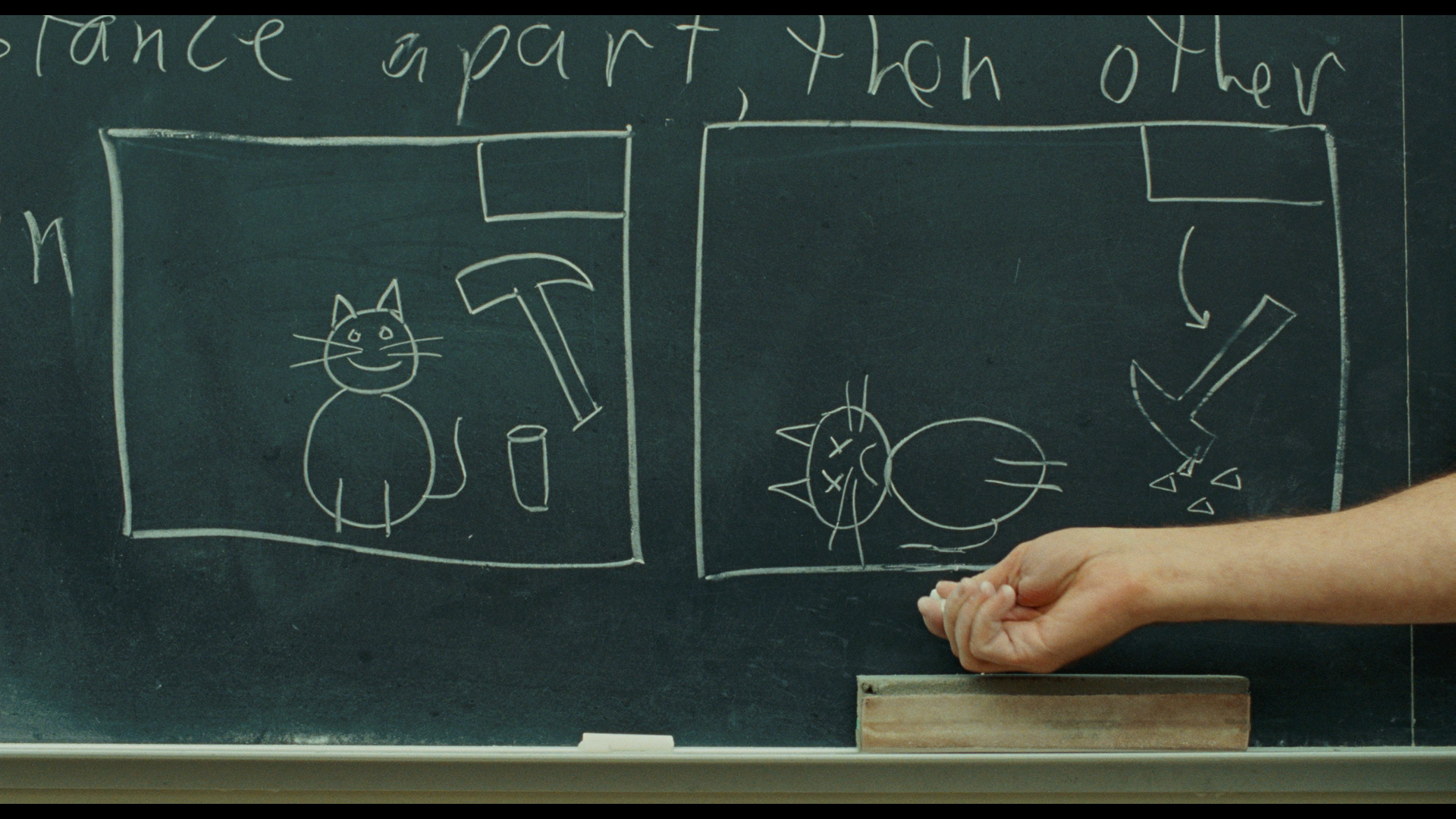Khortlan Patterson is a Junior at the University of Alabama majoring in Religious Studies and African American Studies. She is interested in education reform and minority academic achievement. This post was originally written for Dr. Rollens’ course, REL 360: Popular Culture/Public Humanities.
A Serious Man is a film detailing a series of unfortunate life events of a Jewish man, Larry Gopnik. Many of us find ourselves in similar messes where we look for or actively commission others, who we consider qualified and informed, to make meaning of our lives. This film addresses this common practice in a satirical manner, which prompts us to be more aware of who we authorize to make meaning for us.
The film opens with a scene of a Jewish man and his wife dealing with a family friend whom the wife believes is possessed by a dybbuk, a soul of a dead person that often looks to possess a live person. In the fable, both wife and husband made their own meaning of the Rabbi’s appearance, which effectually removes the filmmaker from the creation of meaning. Although they disagreed, the couple’s respective meanings ultimately informed how they interacted with the Rabbi. I was quite intrigued by this fable and how it might relate to the rest of the movie. I think it plays into the question of who makes meaning, which Dr. Trost posed during the class reflection following the film. The filmmaker, though, does not reveal the “true” meaning of the fable, which leaves the viewer slightly puzzled as to how it may fit into the rest of the movie. The viewer, then, is responsible of making meaning of the fable, which aligns with the rest of the film and its message.
For example, the question of who makes meaning was addressed during Gopnik’s interactions with a math student of his who is displeased with his grade in the course. When trying to explain the math behind Schrödinger’s Dead Cat theory, Gopnik admits that not even he understands the fable of the cat, but places more importance and meaning on the math. The student did not understand the math behind the Dead Cat theory, but fully understood the fable of the Dead Cat. This instance illustrates a main theme throughout the movie: who is authorized to make meaning. It also brings up the question of the role of ambiguity in the movie. Who is able to make meaning out of the ambiguity? Why do some occurrences remain ambiguous while others are clarified or resolved?
For Gopnik, it seems that he gives others (Rabbis, lawyers, friends) authority to make meaning of his life situations, but not himself. As Gopnik struggles to make meaning of his pending divorce and other crises, he seeks out the guidance of several Rabbis and lawyers. It was quite interesting to note whom Gopnik went to resolve certain issues. For example, Gopnik sought the help Rabbis for his pending divorce so that it could be conducted in such a way that was acceptable to the Synagogue. Although, when Gopnik tried to bring up the Jewish issue of a gett to an attorney, he was promptly informed that the attorney did not deal with such issues. The two sets of laws (religious and civil) that Gopnik tries to abide by and navigate through ultimately inform whom he seeks out and authorizes to make sense of his life. The intersection of religious and state laws plays an interesting role in this film and also connects to the overarching theme of who is authorized to make meaning.
So an interesting theme that this film raises is: how do we, as a community, authorize certain people to make meaning? How do we all agree that a lawyer, doctor, or Rabbi is the most knowledgeable in the issues we present to them?
